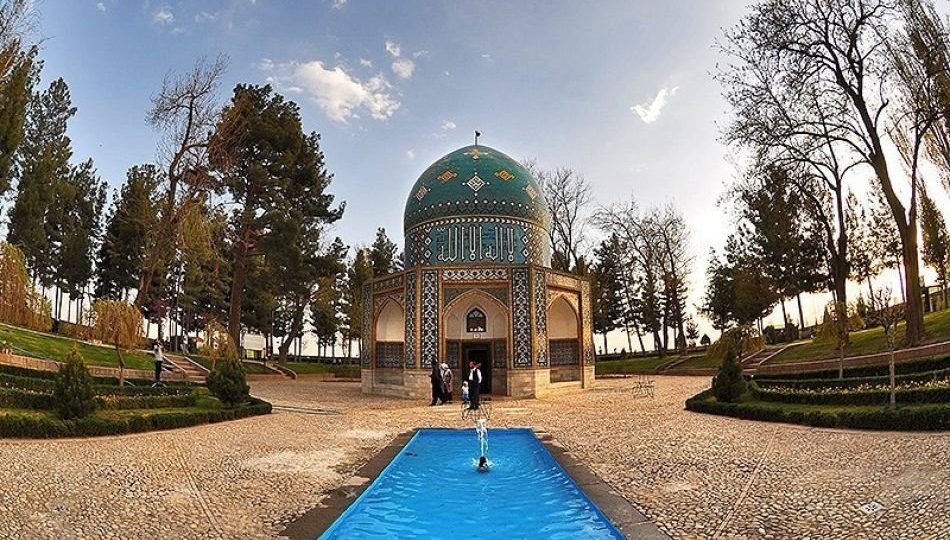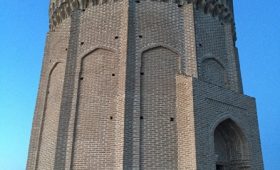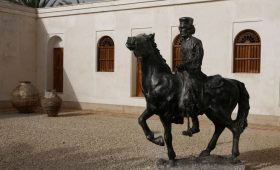Attar is one of the poets and writers of the 6th century AH. His real name was Fariduddin Abu Hamid, and there is no exact information about his birth year, and his date of birth is considered to be from 513 AH to 537 AH. Attar was born in the village of “Kedkan”, which was one of the villages of Neishabur, and there are no specific details about his childhood. Attar’s father was engaged in the business of attari (selling medicine) and “Fariduddin” turned to the same job after his father’s death.
In addition to selling medicine, Attar was also engaged in medicine and he says about this:
What is certain is that Attar underwent a spiritual transformation in the middle of his life and turned to mysticism. There are stories about how this spiritual revolution took place, the truth of which is not known from a historical point of view, but the most famous of them is that one day Attar was doing business in his shop when a dervish came there and repeatedly saying “give something to God” from Attar asked for help, but he did not give anything to the dervish.
The dervish said to him: O eunuch, how do you want to die?
Attar said: As you die.
Dervish said: Can you die like me?
Attar said: Yes
The dervish put his wooden bowl under his head and passed away saying the word Allah.
When Attar saw this, he became very upset and left the shop and changed his life forever.
After observing the state of Dervish, he stopped his business and went to the service of the mystic Ruknuddin, who was a famous mystic at that time.
Attar then spent a part of his life in traveling according to the custom of the mystics and traveled from Mecca to Maural al-Nahr and during these trips he visited many elders and elders of his time.
There are different narratives about Attar’s death, and some say that he was killed by a Mongol soldier during the Mongol attack on Nishabur city, and the time of his death was probably between 627 or 632 AH. What is certain is that at the time of the Mongols’ attack on Iran, the mystics, unlike many people who ran away from the existing conditions, sometimes stood alone in front of the Mongols and believed that we benefited from the blessings of this land and will stand in its hardships.
Attar Mausoleum is one of the famous places of Neishabur and it is located in the southeast of the city, at a distance of 6.5 kilometers on the road from Neishabur to Mashhad, on the east side and close to Kamal al-Molk Mausoleum.
The tomb of Attar Neishaburi is a historical building that was built in the Timurid period by Amir Alishir Nawai on the grave of Atar Neishaburi. In the second Pahlavi periods, restoration was complete and in the 70s, restoration was shortened. This tomb is now considered one of the famous places of Razavi Khorasan Province.
Attar, as his name suggests, had an attar shop in Neishabur and was killed in the Mongol attack on Neishabur. He is considered one of the most prolific Iranian poets, and according to mystics, he had a high rank in the field of mysticism. As Molavi says about him:
Haft Shahr Eshgh Raatar Gosht Mahnowz Ender Khem Ek Kuchem
Attar’s tomb was initially a modest and modest building and it was left to ruin at the end of the Timurid era, until Amir Alishir Navayi, the Minister of Charity of Sultan Hossein Bayqra, built a magnificent mansion on Atar’s tomb in the 9th century AH. At the end of the reign of Mohammad Ali Shah Qajar, Nir al-Dawla, the governor of Khorasan who was on his way to Mashhad, ordered a tomb to be built on Atar’s grave. But this order was left unfinished due to the disorder of the situation and Nir al-Doulah’s return to Tehran, and apparently the same building as before remained on Attar’s tomb.
The present building of the tomb has eight sides and a tiled dome and four entrance doors. There are four tiled pavilions on its exterior, and in the middle of the mausoleum, there is Attar’s grave and an eight Turkish column with a height of 3 meters.
The tiles of the Attar dome are decorated with flowers and bushes, geometric motifs, Kufi inscriptions, and pendants in green, yellow, azure, and white colors. There are four entrance porches on the outer body of this building.
Attar’s tombstone is a black raised type with poems written in the third script. The top of the walls are plastered inside and some poems written on the plaster are decorated under the dome.
Attar’s mausoleum was brick, simple and dilapidated, until the National Antiquities Association, in the process of restoration, started tiling and restoring the mausoleum’s decorations and organized a beautiful area next to the mausoleum, so that this green space could create an atmosphere in honor of him and the famous Iranian painter Kamal Elmak. . The tomb of Kamal Elmak, designed by Master Hoshang Sihon, is located in the same area at a short distance from this building. The design of this building in coordination with the tomb of Atar Nishaburi has played an important role in emphasizing the values of Iranian culture in this place.




